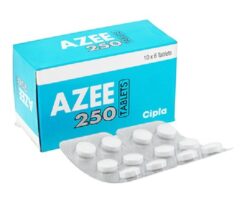Description
How should I take Eliquis?
buy eliquis online exactly as prescribed by your doctor. Follow all directions on your prescription label and read all medication guides or instruction sheets. Your doctor may occasionally change your dose.buy eliquis online
You may take Eliquis with or without food.
If you cannot swallow a tablet whole, crush it and mix with water, apple juice, or applesauce. Swallow the mixture right away without chewing.
A crushed tablet mixture may also be given through a nasogastric (NG) feeding tube. Read and carefully follow any Instructions for Use provided with your medicine.
Eliquis can make it easier for you to bleed, even from a minor injury. Seek medical attention if you have bleeding that will not stop.
Tell your doctor if you have a planned surgery or dental work. You may need to stop taking Eliquis for a short time.
Do not stop taking Eliquis unless your doctor tells you to.
If you stop taking Eliquis for any reason, your doctor may prescribe another medicine to prevent blood clots.
Store at room temperature away from moisture and heat.
Dosing information
Usual Adult of Eliquis Dose for Deep Vein Thrombosis — Prophylaxis:
DEEP VEIN THROMBOSIS (DVT) PROPHYLAXIS FOLLOWING HIP OR KNEE REPLACEMENT SURGERY:
2.5 mg orally twice a day
Duration of therapy:
-Hip replacement: 35 days
-Knee replacement: 12 days
Comments: The initial dose should be taken 12 to 24 hours after surgery.
Use: Prophylaxis of DVT, which may lead to pulmonary embolism (PE), in patients who have undergone hip or knee replacement surgery.
RECURRENT DVT AND PE RISK REDUCTION:
2.5 mg orally twice a day.
Usual Adult Dose of Eliquis for Deep Vein Thrombosis Prophylaxis after Hip Replacement Surgery:
DEEP VEIN THROMBOSIS (DVT) PROPHYLAXIS FOLLOWING HIP OR KNEE REPLACEMENT SURGERY:
2.5 mg orally twice a day
Duration of therapy:
-Hip replacement: 35 days
-Knee replacement: 12 days
Comments: The initial dose should be taken 12 to 24 hours after surgery.
Use: Prophylaxis of DVT, which may lead to pulmonary embolism (PE), in patients who have undergone hip or knee replacement surgery.
RECURRENT DVT AND PE RISK REDUCTION:
2.5 mg orally twice a day.
Adult Dose for of Eliquis Deep Vein Thrombosis Prophylaxis after Knee Replacement Surgery:
DEEP VEIN THROMBOSIS (DVT) PROPHYLAXIS FOLLOWING HIP OR KNEE REPLACEMENT SURGERY:
2.5 mg orally twice a day
Duration of therapy:
-Hip replacement: 35 days
-Knee replacement: 12 days
Comments: The initial dose should be taken 12 to 24 hours after surgery.
Use: Prophylaxis of DVT, which may lead to pulmonary embolism (PE), in patients who have undergone hip or knee replacement surgery.
RECURRENT DVT AND PE RISK REDUCTION:
2.5 mg orally twice a day.
Usual Adult Dose of Eliquis for Prevention of Thromboembolism in Atrial Fibrillation:
5 mg orally 2 times a day
Use: Reduction of risk of stroke and systemic embolism in patients with nonvalvular atrial fibrillation.
Usual Adult Dose of Eliquis for Thromboembolic Stroke Prophylaxis:
5 mg orally 2 times a day
Use: Reduction of risk of stroke and systemic embolism in patients with nonvalvular atrial fibrillation.
Adult Dose for Deep Vein Thrombosis:
Initial dose: 10 mg orally 2 times a day for 7 days
Maintenance dose: 5 mg orally 2 times a day
Use: Treatment of deep vein thrombosis and pulmonary embolism.
Usual Adult Dose for Pulmonary Embolism:
Initial dose: 10 mg orally 2 times a day for 7 days
Maintenance dose: 5 mg orally 2 times a day
Use: Treatment of deep vein thrombosis and pulmonary embolism.
Eliquis side effects
Get emergency medical help if you have signs of an allergic reaction to Eliquis: hives; chest pain, wheezing, difficult breathing; feeling light-headed; swelling of your face, lips, tongue, or throat.
Also seek emergency medical attention if you have symptoms of a spinal blood clot such as tingling, numbness, or muscle weakness especially in your legs and feet.
Call your doctor at once if you have:
-
easy bruising, unusual bleeding (nose, mouth, vagina, or rectum), bleeding from wounds or needle injections, any bleeding that will not stop;
-
heavy menstrual bleeding;
-
headache, dizziness, weakness, feeling like you might pass out;
-
urine that looks red, pink, or brown; or
-
black or bloody stools, coughing up blood or vomit that looks like coffee grounds.
This is not a complete list of side effects and others may occur. Call your doctor for medical advice about side effects. You may report side effects to FDA at 1-800-FDA-1088.
Eliquis is used to lower the risk of stroke or a blood clot in people with a heart rhythm disorder called atrial fibrillation.
Eliquis reduces the risk of forming a blood clot in the legs and lungs of people who have just had hip or knee replacement surgery.
Eliquis treats blood clots in the veins of your legs (DVT – deep vein










Reviews
There are no reviews yet.